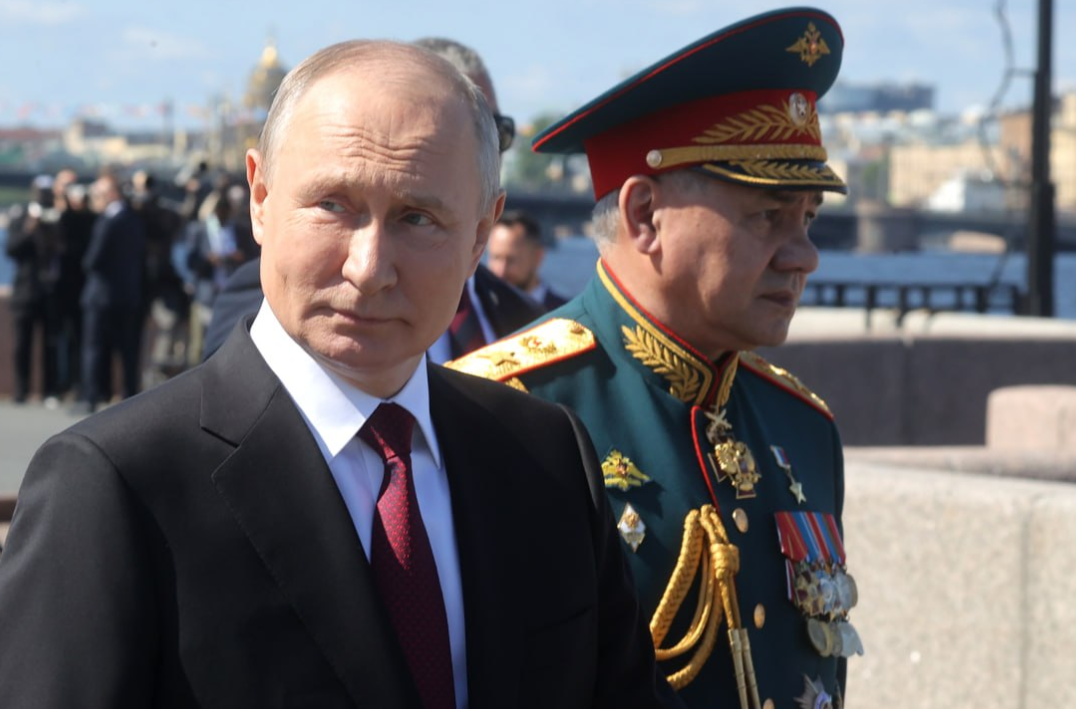Putin Declares Russia Holds 95% of Most Advanced Nuclear Weapons:In a chilling declaration that has rattled global powers, Russian President Vladimir Putin announced that 95% of Russia’s strategic nuclear forces are equipped with the world’s most advanced weapons — including cutting-edge submarines, intercontinental ballistic missiles, and strategic bombers. As the nuclear arms race intensifies, Putin’s statement signals a bold assertion of military dominance and a stark reminder of the devastating firepower Moscow holds at its fingertips. With the U.S. and China also ramping up their nuclear capabilities, the world stands on the edge of an era where mutual destruction is no longer a relic of the past, but a looming threat of the present.
Putin Declares Russia Holds 95% of Most Advanced Nuclear Weapons
As the world barrels through an era of unprecedented geopolitical instability, the specter of nuclear war is no longer a distant fear — it is a rising reality. The year 2024 has become a milestone for global conflict, tearing through decades of fragile peace and plunging international relations into a chilling new arms race. Nations are arming themselves at a pace not seen since the Cold War, with each major power showcasing its nuclear capabilities like never before.
Russia, already locked in a devastating war, made headlines with a stark declaration from President Vladimir Putin. In a televised statement, Putin announced that Russia’s nuclear triad — a military structure consisting of land-based missiles, submarine-launched missiles, and strategic bombers — now holds 95% of the most advanced nuclear weapons in the world. This nuclear triad, he emphasized, is not just a defensive shield, but a fundamental guarantor of Russia’s sovereignty. According to him, its strength ensures the global balance of power, and the modernization rate of these weapons, at 95%, is unmatched by any other nuclear-armed nation.
This isn’t just political posturing — it is a direct warning to the rest of the world. The statement acts as a reminder of the destructive power that lies within Moscow’s grasp. The figure alone, 95% modern weapon coverage in its strategic nuclear forces, sends a strong message: Russia sees its nuclear arsenal as a critical tool of global influence, not just a deterrent.
On the other side of the Atlantic, the United States is responding in kind. The Pentagon has begun flexing its own nuclear muscle, signaling that it won’t be left behind. The U.S. Air Force recently showcased its Minuteman III intercontinental ballistic missile — a staple of America’s nuclear deterrence program. Just three weeks ago, the U.S. tested this massive missile, and more test launches are on the horizon. In parallel, the U.S. is also stepping up production of the B61 gravity bomb, a key component of its thermonuclear arsenal. These weapons are designed to be precise, powerful, and deadly — reinforcing America’s message that its nuclear edge is still razor-sharp.
China is not far behind in this deadly race. According to U.S. intelligence, Beijing now boasts the fastest-growing nuclear arsenal among the seven recognized nuclear powers. Reports suggest that China is on track to possess over 1,000 operational nuclear warheads by the year 2030. This rapid buildup is raising alarms across Western defense circles, with analysts noting that China is not just expanding — it’s evolving its entire strategic doctrine.
What these developments collectively signal is a dangerous unraveling of the already fragile fabric of global peace. The nuclear arms race, thought to be a relic of the Cold War, has returned with frightening urgency. As these superpowers brandish their “weapons of doom,” the possibility of a global miscalculation or accidental escalation increases dramatically.
From Moscow’s overwhelming modernization to Washington’s aggressive testing schedule, and China’s meteoric rise in nuclear capability — the world is witnessing a chilling revival of the nuclear age. This new era is marked not by quiet deterrence but by open demonstration, signaling a shift from nuclear restraint to nuclear assertion.
The destructive capacity possessed by these nations is not theoretical. It is real, present, and rapidly growing. These weapons are not museum pieces — they are on alert, tested, and ready. As the globe stares down the possibility of full-scale conflict, the need for urgent diplomatic engagement, arms control treaties, and global cooperation is more critical than ever before.
In this volatile world, one misstep, one misunderstanding, could trigger consequences too catastrophic to imagine. The nuclear nightmare that once haunted past generations is no longer a ghost — it is a looming, tangible threat hanging over the future of humanity.
Disclaimer:
This article is based on publicly available information and media reports. It is intended for informational purposes only and does not promote or support any form of violence, conflict, or political agenda. The views expressed by political leaders or nations are quoted as reported and do not reflect the views of the publisher. Readers are advised to stay informed through credible sources and approach sensitive geopolitical topics with discretion and critical thinking.

